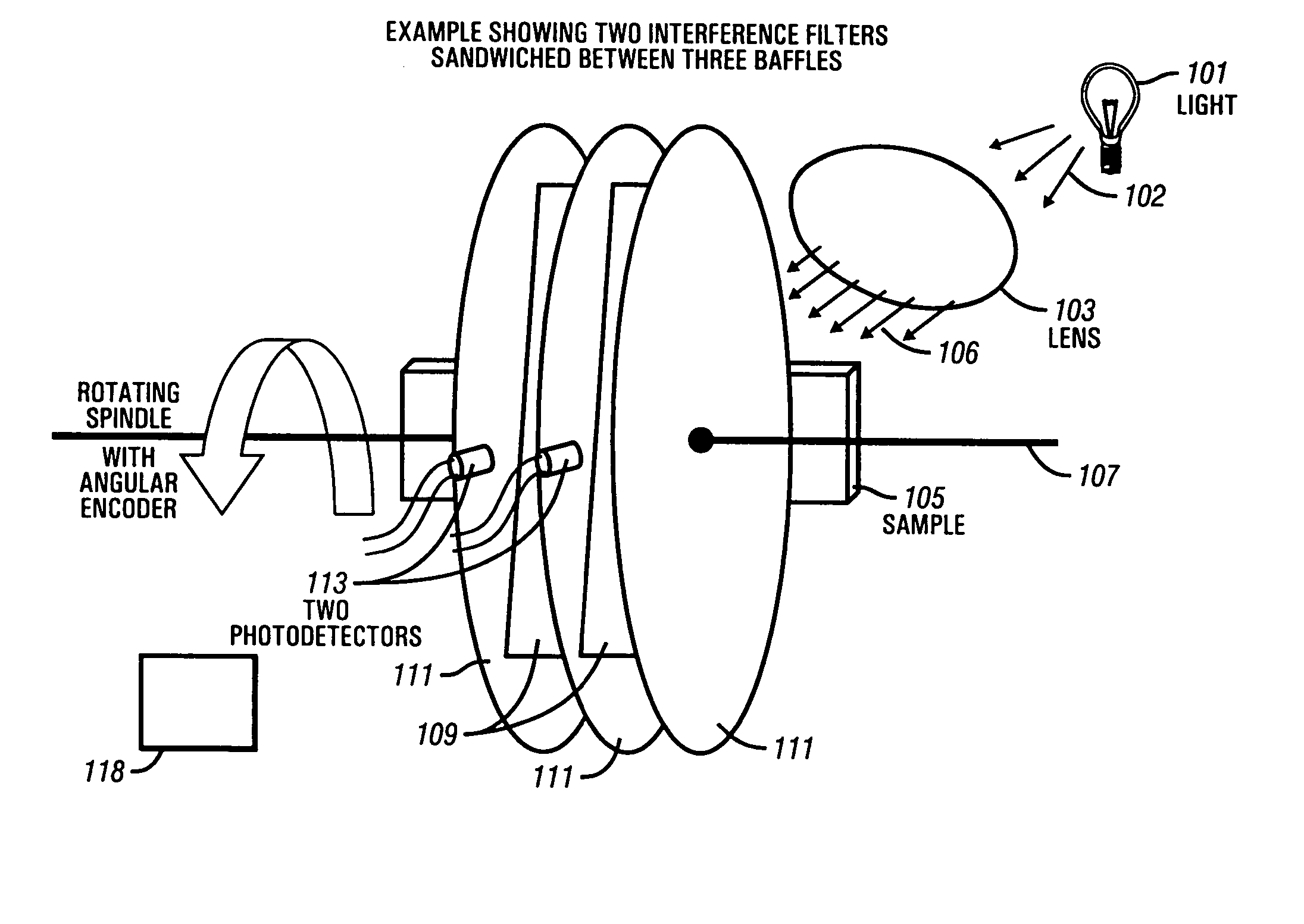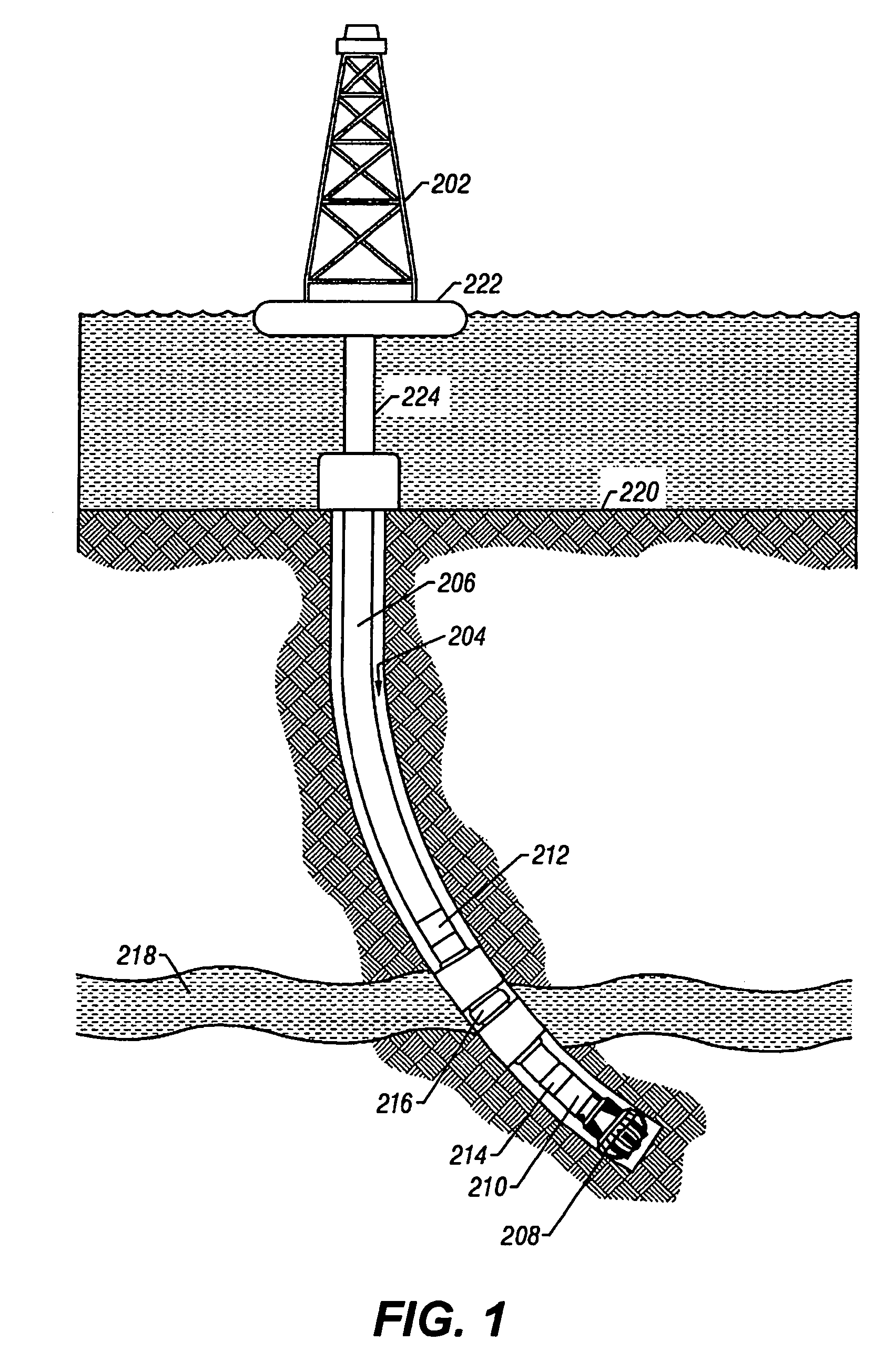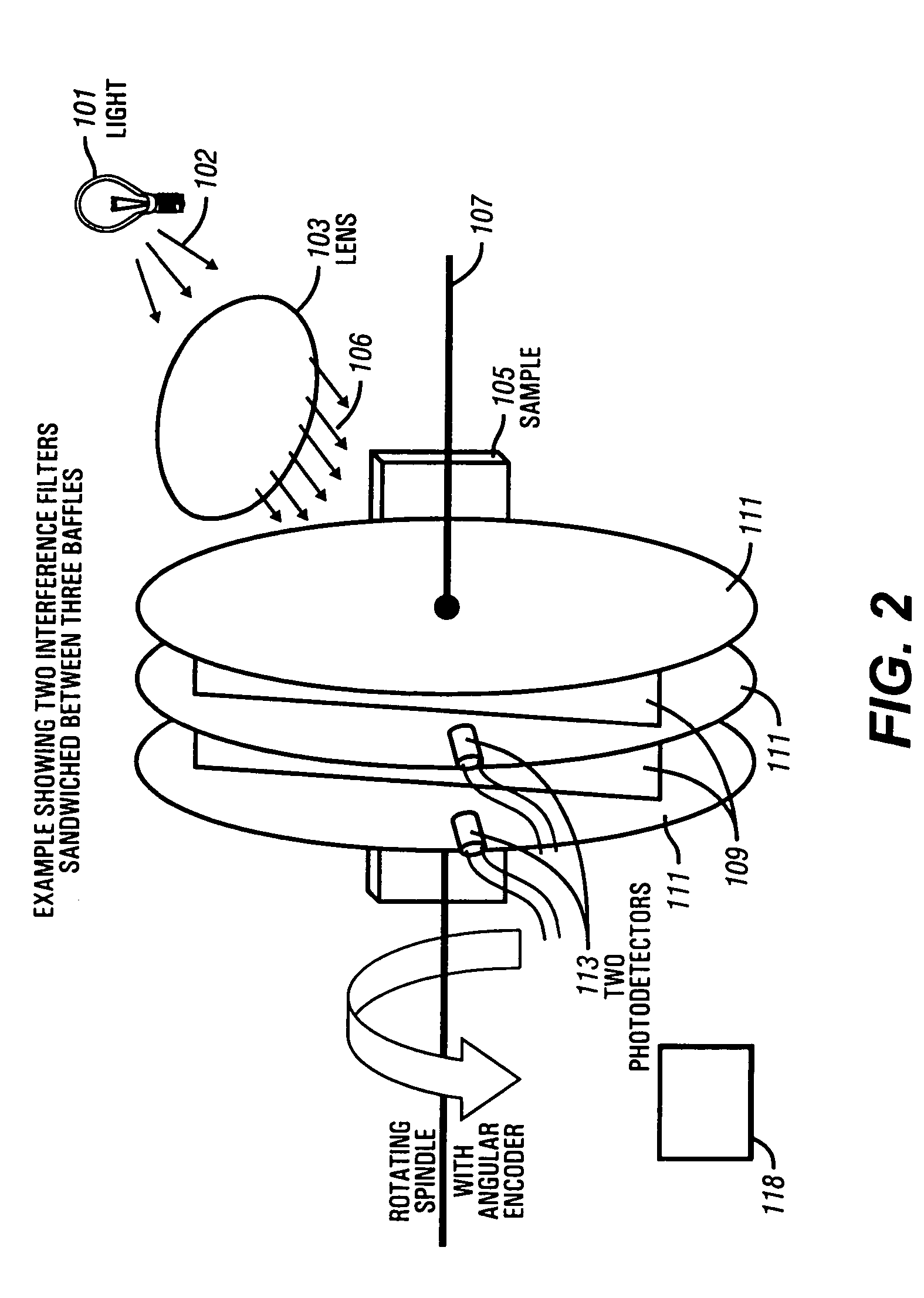Method and apparatus for a high resolution downhole spectrometer
a scanning spectrometer, high-resolution technology, applied in the direction of optical radiation measurement, survey, borehole/well accessories, etc., can solve the problems of waste of expensive rig time, sample may be useless, invalid samples, etc., and achieve high resolution, simple, robust and versatile
- Summary
- Abstract
- Description
- Claims
- Application Information
AI Technical Summary
Benefits of technology
Problems solved by technology
Method used
Image
Examples
Embodiment Construction
[0029]FIG. 1 illustrates an embodiment of the present invention deployed in a borehole. The present invention is suitable for deployment in either a wire line, slick line or monitoring while drilling environment. FIG. 1 illustrates a preferred embodiment of the present invention deployed in a monitoring while drilling operation.
[0030]Turning now to FIG. 1, FIG. 1 is a drilling apparatus according to one embodiment of the present invention. A typical drilling rig 202 with a borehole 204 extending there from is illustrated, as is well understood by those of ordinary skill in the art. The drilling rig 202 has a work string 206, which in the embodiment shown is a drill string. The drill string 206 has attached thereto a drill bit 208 for drilling the borehole 204. The present invention is also useful in other types of work strings, and it is useful with a wireline, jointed tubing, coiled tubing, or other small diameter work string such as snubbing pipe. The drilling rig 202 is shown pos...
PUM
| Property | Measurement | Unit |
|---|---|---|
| FWHM | aaaaa | aaaaa |
| path length | aaaaa | aaaaa |
| wavelength | aaaaa | aaaaa |
Abstract
Description
Claims
Application Information
 Login to View More
Login to View More - R&D
- Intellectual Property
- Life Sciences
- Materials
- Tech Scout
- Unparalleled Data Quality
- Higher Quality Content
- 60% Fewer Hallucinations
Browse by: Latest US Patents, China's latest patents, Technical Efficacy Thesaurus, Application Domain, Technology Topic, Popular Technical Reports.
© 2025 PatSnap. All rights reserved.Legal|Privacy policy|Modern Slavery Act Transparency Statement|Sitemap|About US| Contact US: help@patsnap.com



